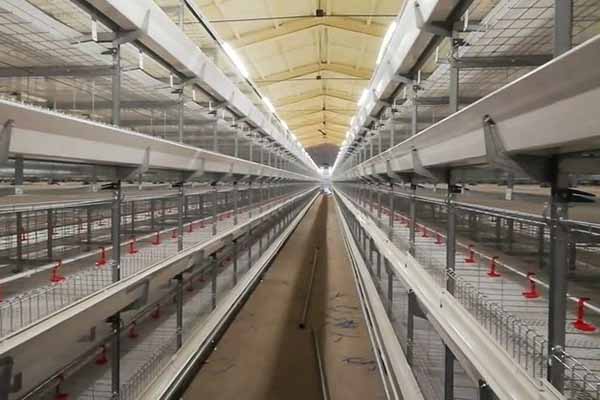Layer Farming Business Plan in Kenya: A Comprehensive Guide
Time : 2025-04-16
Are you considering starting a layer farming business in Kenya? If so, you’ve come to the right place. In this comprehensive guide, we’ll cover everything you need to know about creating a business plan for a layer farming business in Kenya. From market analysis to financial projections, we’ll walk you through the process step by step.
Understanding Layer Farming in Kenya
Before diving into the business plan, it’s important to have a clear understanding of layer farming in Kenya. Layer farming refers to the rearing of chickens for egg production. Kenya has a growing demand for eggs, and layer farming is a viable business opportunity for entrepreneurs looking to tap into this market.
Market Analysis
The first step in creating a layer farming business plan is to conduct a thorough market analysis. Here are some key points to consider:
– Demand for Eggs: Kenya’s egg consumption is on the rise, with urban areas having the highest demand. According to the Kenya National Bureau of Statistics, the per capita consumption of eggs has been increasing over the years.
– Competitors: Identify existing layer farming businesses in your area and assess their strengths and weaknesses. This will help you understand the market dynamics and identify opportunities for differentiation.
– Regulations: Familiarize yourself with the regulations and standards set by the Kenya Plant Health Inspectorate Service (KEPHIS) for layer farming.
Business Description
Your business description should clearly define your layer farming business, including its mission, vision, and values. Here’s an example:
Our mission is to provide high-quality eggs to consumers in Kenya by maintaining a sustainable and hygienic layer farming operation. We aim to be the leading layer farming business in our region, known for our commitment to quality and customer satisfaction.
Business Model
A layer farming business in Kenya typically operates on the following business model:
– Breeder: Purchase day-old chicks from a reputable breeder.
– Rearing: Feed, care for, and house the chicks until they reach laying age.
– Laying: Collect eggs and sell them to wholesalers, retailers, or directly to consumers.
– Waste Management: Properly dispose of poultry waste to minimize environmental impact.
Marketing Strategy
To successfully market your layer farming business in Kenya, you’ll need to develop a comprehensive marketing strategy. Here are some tips:
– Identify Your Target Market: Determine who your potential customers are, such as wholesalers, retailers, or consumers.
– Create a Brand: Develop a strong brand identity, including a logo, slogan, and packaging design.
– Promotional Activities: Use various marketing channels, such as social media, print ads, and direct mail, to promote your business.
Operations Plan
Your operations plan should outline the day-to-day activities of your layer farming business. Here’s a breakdown:
– Chicken Housing: Build or lease a suitable facility for housing your chickens, ensuring proper ventilation, lighting, and temperature control.
– Feeding: Develop a balanced diet for your chickens, considering factors such as protein, vitamins, and minerals.
– Health and Welfare: Implement a health management program to prevent and treat diseases in your chickens.
– Labor Management: Hire and train staff to handle various tasks, such as feeding, cleaning, and egg collection.
Financial Projections
A crucial aspect of your layer farming business plan is the financial projections. Here’s what you should include:
– Start-up Costs: Estimate the initial costs, such as building or leasing the facility, purchasing chicks, and equipment.
– Operating Expenses: Calculate your monthly operating expenses, including feed, labor, utilities, and marketing.
– Revenue: Project your monthly and annual revenue, considering the number of eggs produced and the selling price.
– Break-even Analysis: Determine the point at which your business will start generating profit.
Risk Management
Identifying and mitigating risks is essential for the success of your layer farming business. Here are some common risks to consider:
– Market Fluctuations: Changes in egg prices can impact your revenue. Diversify your income sources or adjust your pricing strategy accordingly.
– Disease Outbreaks: Implement biosecurity measures to minimize the risk of disease outbreaks.
– Regulatory Changes: Stay informed about any changes in regulations or standards that may affect your business.
Conclusion
Creating a layer farming business plan in Kenya requires thorough research and careful planning. By following this guide, you’ll be well on your way to launching a successful layer farming business. Remember to continuously monitor and adjust your business plan as needed to ensure long-term success.
—












